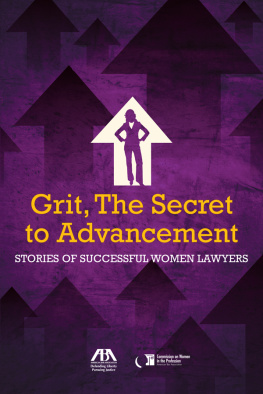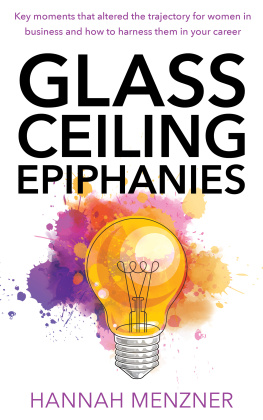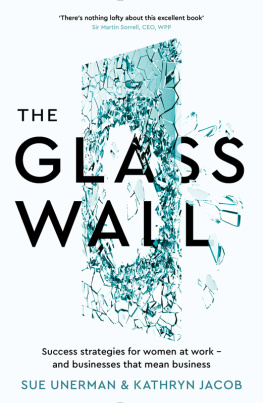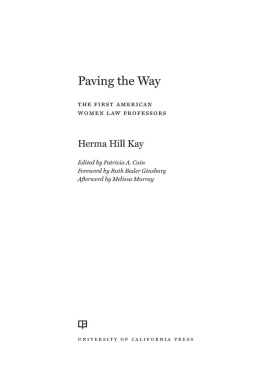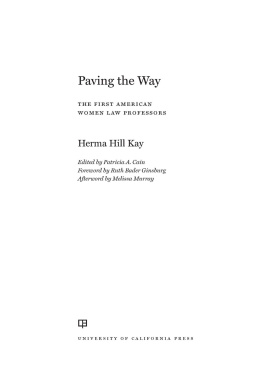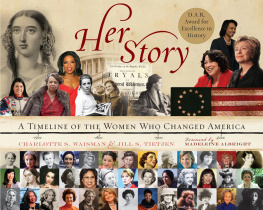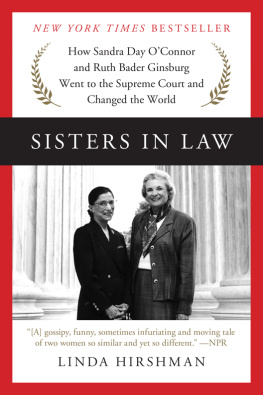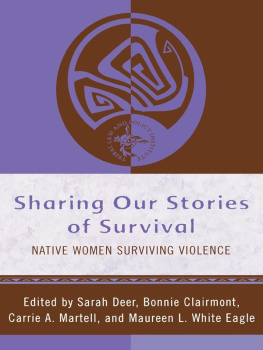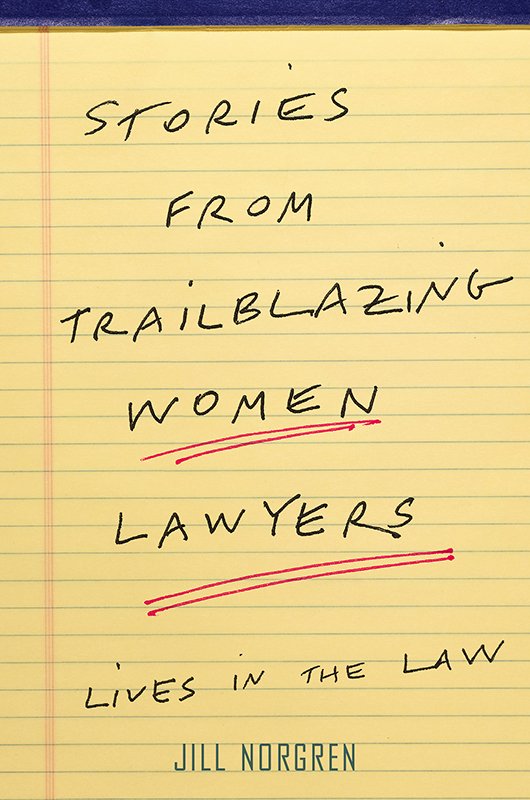
Stories from Trailblazing Women Lawyers
Stories from Trailblazing Women Lawyers
Lives in the Law
Jill Norgren

NEW YORK UNIVERSITY PRESS
New York
NEW YORK UNIVERSITY PRESS
New York
www.nyupress.org
2018 by New York University
All rights reserved
References to Internet websites (URLs) were accurate at the time of writing. Neither the author nor New York University Press is responsible for URLs that may have expired or changed since the manuscript was prepared.
Library of Congress Cataloging-in-Publication Data
Names: Norgren, Jill, author.
Title: Stories from trailblazing women lawyers : lives in the law / Jill Norgren.
Description: New York : New York University Press, 2018. | Includes bibliographical references and index.
Identifiers: LCCN 2017054992 | ISBN 9781479865963 (cl : alk. paper)
Subjects: LCSH: Women lawyersUnited States.
Classification: LCC KF299.W6 N65 2018 | DDC 340.092/520973dc23
LC record available at https://lccn.loc.gov/2017054992
New York University Press books are printed on acid-free paper, and their binding materials are chosen for strength and durability. We strive to use environmentally responsible suppliers and materials to the greatest extent possible in publishing our books.
Manufactured in the United States of America
10 9 8 7 6 5 4 3 2 1
Dedicated to the women of the legal profession
And, especially, Brooksley and Linda for their commitment to gathering the history of American women lawyers
Contents
It was 1967. The Vietnam War was raging. The African American civil rights movement was full-blown, but many women of all races were only just beginning to consider the discrimination that they experienced in family life, school, sports, and work. I was in my mid-twenties, a married political science graduate student at the University of Michigan. For a while, Ann Arbor felt like it would be my Waterloo. While canvassing for the candidates of my political party, I learned that ladies did not mess in the messy business of politics. Charles, my ever-polite next door neighbor who worked on the line at General Motors, told me this as he asked, Why is a cute little girl like you running around asking people to vote? You should be at home. I was dismayed, but I laughed.
That same year, at a party at the home of my husbands academic adviser, I was told by the host that ladies did not wear pants suits (mine was apple green and softly tailored). Across the length of his crowded living room, the otherwise politically liberal Dr. O. bellowed, Oh, here are Mister and Mister Norgren. I was dismayed but held my tongue.
And then, in quick succession, I discovered that my professional ambitions had to include a male protector if I were to be awarded foundation research funds to conduct fieldwork in eastern Kentucky coal country, and was told that I would receive only honorable mention for a national grant fellowship because my husband already earned the munificent amount of six thousand dollars a year. This was not life as I wanted it to be, or knew it ought to be.
Like the women in this book, I have had to work my way over and around personal and professional hurdles to have a fair shot at equal treatment and opportunity as a wife, professor, and writer. I am not a lawyer, but I have lived through, and understand, American society as experienced by these legal Trailblazers. The United States of the 1950s and 1960s presented women with few opportunities for professional aspiration outside of nursing, teaching, and library work. Virtually no lawmakers were women, the Pill was new, and control of ones body was an evolving experience. Like it or not, and to be fair many did like it, women were expected to be homemakers.
A colleague once told me that I should become a lawyer. I did not take his advice, but, in my own way, I have come to inhabit the world of lawyers. As a writer I have dug deep into the history of American women lawyers in order to explore how, in the nineteenth and twentieth centuries, they used ambition, intelligence, changing social mores, and legislation to battle their way into the male-dominated profession of law.
Stories from Trailblazing Women Lawyers is the third book that I have written about women lawyers in the United States. It draws upon an extraordinary set of oral histories made available to me by the American Bar Associations (ABA) Commission on Women in the Profession along with the Senior Lawyers Division.
In 2005, at the urging and direction of Brooksley Born and Linda Ferren, the Commission on Women initiated a unique, national oral history project. The mission set out by Born and Ferren, organizers of the Women Trailblazers Project (WTP), was a simple but daunting one: one hundred outstanding senior women lawyers would be asked to recount their personal and professional histories in interviews conducted by younger female colleagues. The women to be interviewed were selected on the basis of their accomplishments, contributions that illuminate the role of women in the profession beginning in the postWorld War II period. Many were recipients of the prestigious Margaret Brent Women Lawyers of Achievement Award given by the American Bar Associations Commission on Women in the Profession. Personal and professional considerations led some women to decline the opportunity to participate. Several women have given interviews that will not be available to the public for a number of years.
The typed transcripts of these interviews run from one hundred to five hundred pages. Most number about two hundred pages. The interviews were conducted in offices and homes. They often required several sessions, in some instances stretching over a period of months. The interviewers knew their subjects, permitting a comfortable rapport. These volunteer interviewers received an identical list of broad, open-ended questions to be asked of their subjects. The interviews began with a discussion of childhood and then followed the subjects life through higher education and law school. Interviewers posed questions concerning the lure of a legal career and then asked about job interviews and first legal positions. Considerable time was spent on the development of each womans career, including discussions that focused upon ambition, barriers, mentors, and outcomes. Interviewees were encouraged to chronicle important cases or policy developments in which they participated. Some of the Trailblazers used the conclusion of the interview to reflect on womens changing place in the field of law.
The interviews were recorded and the tapes subsequently used to create written transcripts. Each subject received a copy of this preliminary transcript, which she could edit before the final version was typed and filed.
The women who were interviewed have had careers at private law firms; government agencies; state and federal courts, including the Supreme Court of the United States; Congress; law schools; and public interest legal organizations. The project organizers sought to ensure diversity with race, ethnicity, geography, and professional backgrounds being key considerations. Economic background was not a consideration. A reading of all of the interviews, however, reveals that many of these women came from recent immigrant families or families where the lack of money or poor parental health, including alcoholism, shaped their lives. Many Trailblazers worked their way through college and law school; quite a few received scholarship support or help from members of their extended families.
Next page

